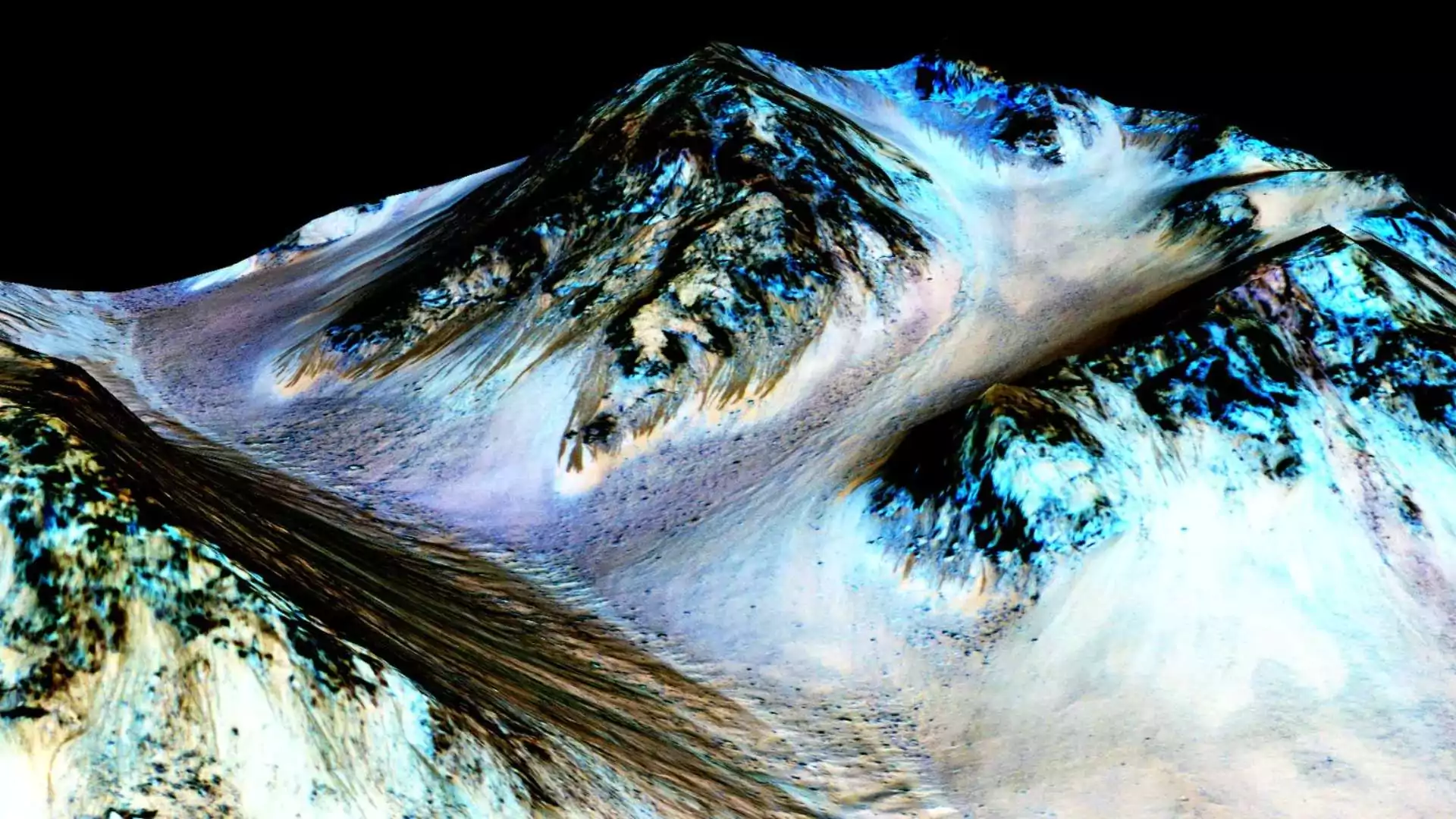Scientists have revealed that there may be vast amounts of liquid water hidden deep within the rocky outer crust of Mars. While the presence of water ice at the Martian poles has been well-documented, this study marks the first time that liquid water has been detected on the Red Planet.
The study, titled Liquid Water in the Martian Mid-Crust, was recently published in the journal Proceedings of the National Academy of Sciences (PNAS). It was conducted by a team of researchers from the University of California, San Diego, including Vashan Wright, Matthias Morzfeld, and Michael Manga.
This discovery could significantly advance our understanding of Mars’ water cycle, offering new insights into the planet’s climate, surface, and internal evolution. Moreover, it may provide a fresh impetus for the ongoing quest to find evidence of life on Mars.
Also Read: World Photography Day 2024: Celebrating The Art Of Capturing Moments
Methodology of the Study
The researchers based their findings on data collected by NASA’s Mars InSight Lander, which touched down on the planet in 2018 and continued its mission until December 2022. The lander was equipped with a seismometer that recorded seismic waves generated by Marsquakes and meteorite impacts over four years. Throughout its mission, InSight recorded over 1,300 quakes, allowing scientists to probe deep into Mars’ interior.
By analyzing the speed and behavior of these seismic waves, the researchers could infer the materials they were passing through. They utilized a geophysical model, similar to those used to map underground aquifers and oil fields on Earth, to analyze the data. This model suggested that deep below Mars’ surface, at depths ranging from 10 to 20 kilometers, lies a layer of fractured igneous rock, possibly granite, with its cracks filled with liquid water.
Key Findings
The study’s findings suggest that this water may have seeped underground from Mars’ surface billions of years ago when the planet still had rivers, lakes, and possibly oceans. According to Vashan Wright, one of the study’s co-authors, “On Earth, groundwater underground infiltrated from the surface, and we expect this process to have occurred on Mars… The infiltration must have happened during a time when the upper crust was warmer than it is today.”
If the data from the InSight Lander’s location is representative of Mars as a whole, the amount of water trapped in these rock fractures could be enough to fill an ocean 1 to 2 kilometers deep.
While this discovery doesn’t directly indicate the presence of life on Mars, it does raise the possibility of a habitable environment. Michael Manga, another co-author, noted, “Water is necessary for life as we know it. I don’t see why [the underground reservoir] is not a habitable environment. It is certainly true on Earth — deep, deep mines host life, the bottom of the ocean hosts life. We have not found any evidence for life on Mars, but at least we have identified a place that should, in principle, be able to sustain life.”
Implications for Mars Exploration
While this discovery is a significant leap forward in our understanding of Mars, it presents challenges for those envisioning human colonization of the planet, such as Elon Musk. The researchers pointed out that drilling 10 to 20 kilometers deep on Mars to access this water would be an immensely difficult task, making it a less accessible resource for potential future settlers.





















